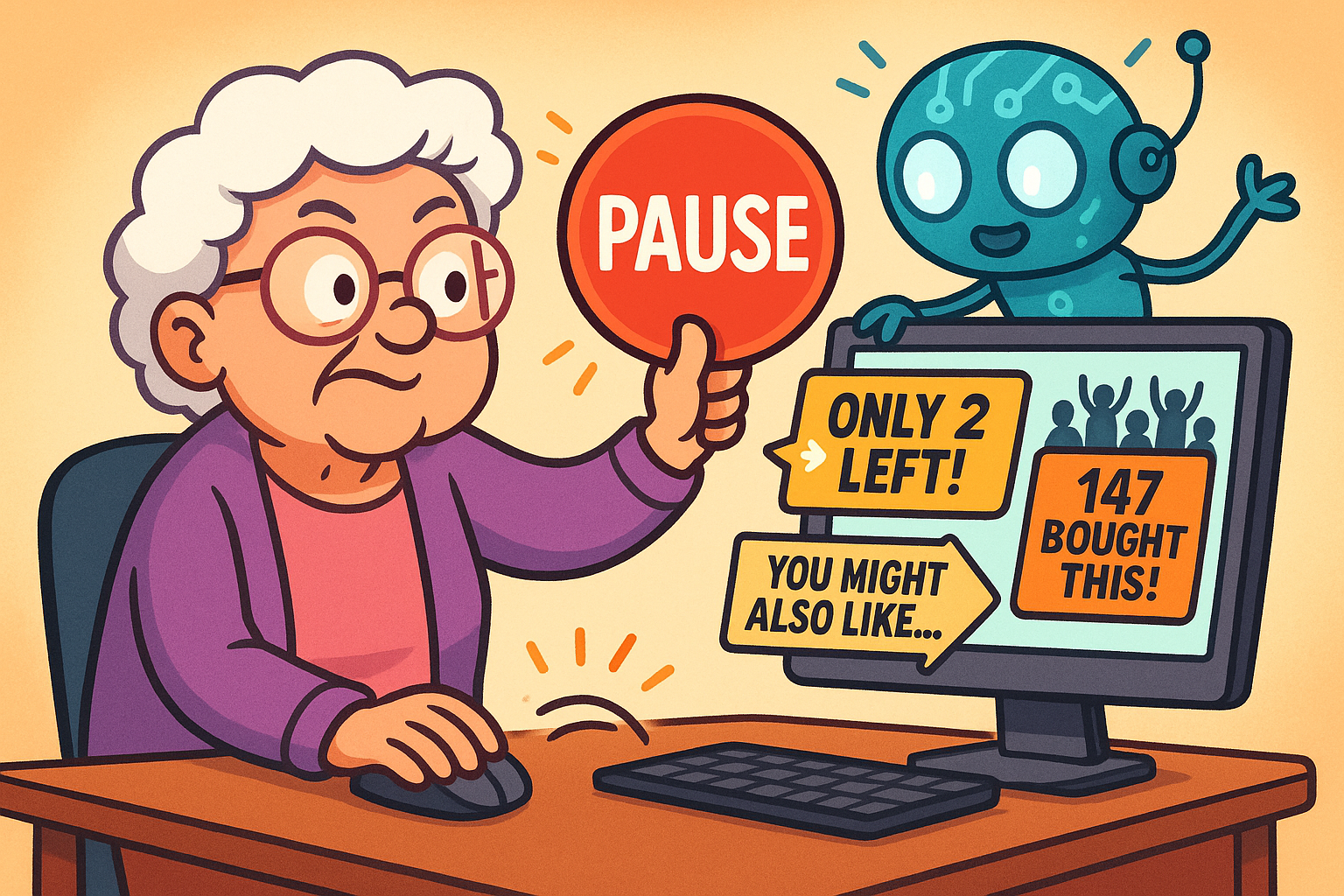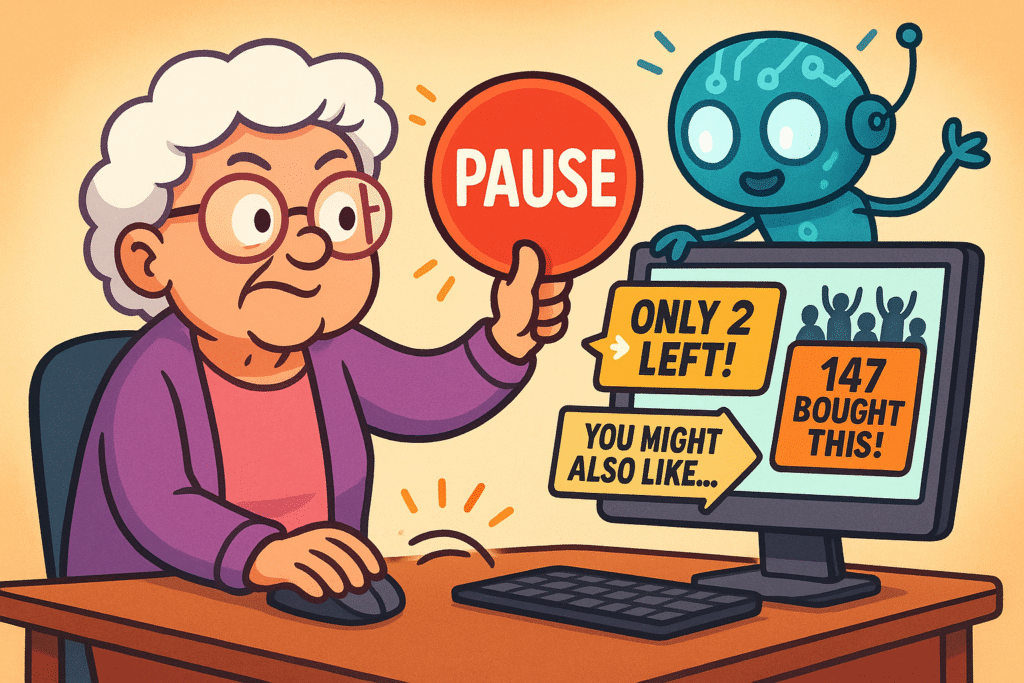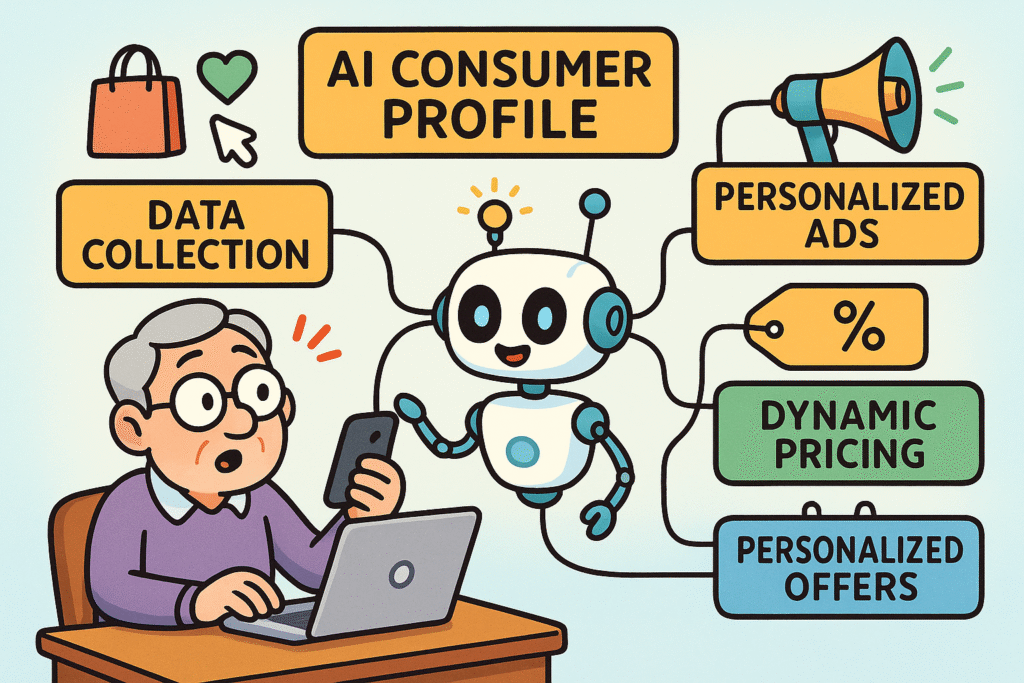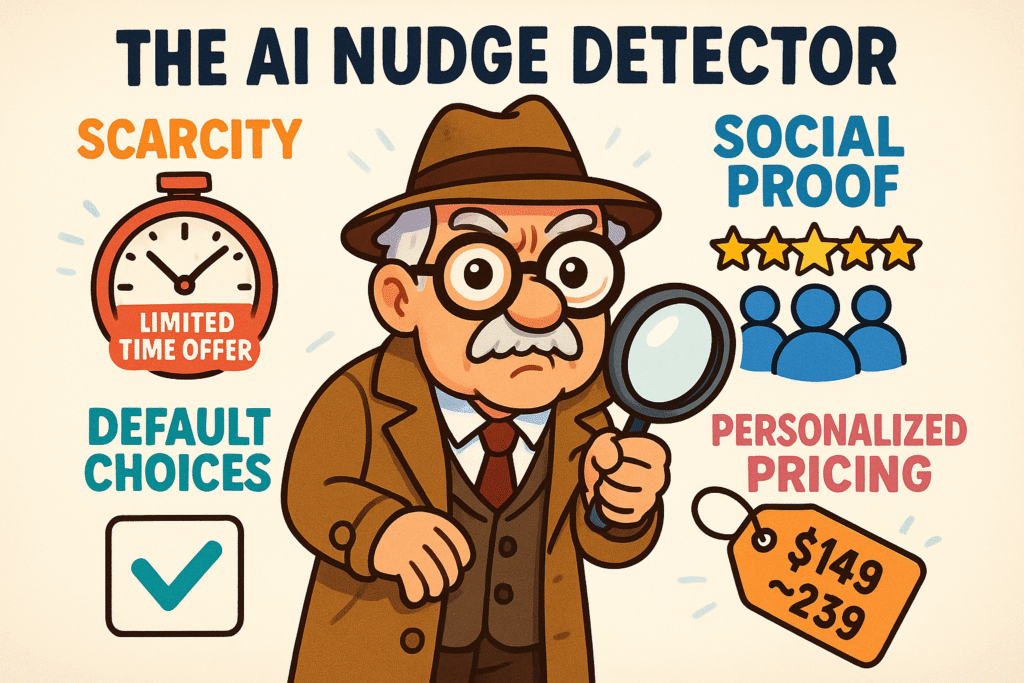
Newsletter Subscribe
Enter your email address below and subscribe to our newsletter

Have you ever had the feeling your computer is reading your mind?
You mention to your spouse that you might need a new pair of gardening gloves, and within minutes, every website you visit is plastered with ads for gloves.
Gloves with extra grip, floral-patterned gloves, gloves endorsed by celebrity gardeners you’ve never heard of.

It’s like a tiny, invisible salesman is living in your laptop, listening to your every thought and whispering, “Psst, how about some gloves?”
If this sounds familiar, you’re not going crazy.
You’re just experiencing the modern marvel—and occasional menace—of Artificial IntelligenceArtificial Intelligence (AI) is basically when computers get smart—really smart. Imagine if your c... More, or AI.
It’s the digital brain that powers everything from your GPS to those surprisingly accurate movie recommendations. It’s designed to make life easier, more convenient, and more… personalized.
But there’s a catch. That same helpful AI is also working for the stores, and its main job is to gently, almost invisibly, encourage you to open your wallet.
It’s a master of persuasion, using subtle tricks and psychological nudges to guide your spending habits.
Today, we’re going to pull back the curtain on this digital wizardry to help keep you safer when using AI.
We’ll explore how AI learns about you, the clever ways it encourages you to spend more, and most importantly, how you can take back control and make sure you’re the one calling the shots.
Think of the AI that tracks your online activity as a ridiculously observant personal shopper who, unfortunately, works for the mall and not for you.
It follows you around, taking detailed notes. “Aha, she lingered at the bird feeder display for 3.7 seconds. She clicked on three different types of loafers. She read reviews for that air fryer.”
This shopper doesn’t forget a thing.
This collection of your habits, clicks, and even how long you look at a picture, creates your “consumer profile.” It’s a digital sketch of who you are, what you like, and what you’re likely to buy.
Companies use this profile to do two very clever things: nudge you and set prices just for you.

A “nudge,” a term from behavioral economics, is a subtle prompt to influence your choices without taking away your freedom to choose.
AI is an expert nudger. Here are its favorite tricks:
These nudges aren’t outright commands.
They’re more like a friend whispering, “Go on, you deserve it.” A very persuasive friend who wants your money.
This is where things get even sneakier.
Have you ever looked up a plane ticket, come back an hour later, and seen the price has jumped? That’s likely dynamic pricing, where prices change for everyone based on demand, time of day, or inventory.
But price discrimination is different. This is when the price changes just for you.
Based on your digital profile—your location, your browsing history, even the device you’re using (some studies have shown Mac users are sometimes shown higher prices than PC users!)—AI might decide you’re willing to pay more for that hotel room or pair of shoes than the person in the next town over.
It’s not illegal, but it certainly doesn’t feel fair.
Alright, enough about the problem. Let’s talk about the solution.
Fighting back against an invisible, super-smart robot brain might sound like a science fiction movie plot, but it’s easier than you think. Y
ou don’t need to be a tech genius; you just need to practice a little “digital hygiene.”
These are simple, practical steps you can take to confuse the tracking AI and make sure you’re seeing a fair price, not a “special” price tailored to your wallet.

The best tool you have against digital manipulation isn’t a piece of software; it’s your own brain.
The companies using AI are counting on you to be on autopilot, clicking “buy now” without a second thought. Your job is to stay awake at the wheel.
Developing a critical mindset means learning to spot the nudges and question what you see. It’s about turning from a passive consumer into an active, aware shopper.

Before you click that tempting button, ask yourself three simple questions:
By building these small moments of friction into your online shopping, you reclaim your power. You give your logical brain a chance to catch up with the emotional pull of the AI’s expertly crafted sales pitch.
It’s when companies use technology to subtly guide your choices online. Think of it like a grocery store putting candy at the checkout counter—it’s not forcing you to buy it, but it’s placing the temptation right where you’re most likely to give in.
They can be. On one hand, seeing ads for things you’re actually interested in can be helpful. On the other hand, they can create desires you didn’t have before and use what they know about you to push emotional buttons, leading to impulse purchases. A key part of online safety is being aware of this influence.
They collect it from many sources: your browsing history (thanks to cookies), your purchase history on their site, what you “like” on social media, your location data, and information you willingly provide when you sign up for accounts.
Not completely, unless you stop using the internet. But by using the digital hygiene tips above, you can significantly reduce the amount of data they collect and limit their ability to build an accurate profile of you.
The world of AI is not something to be afraid of. It offers incredible convenience and can genuinely make our lives better.
But that convenience comes with a hidden cost: our attention and, potentially, our money.
By understanding how the system works, you’ve already taken the most important step. You now know that the online shopping world isn’t a neutral space—it’s an environment carefully designed to influence you.
With a bit of digital hygiene and a healthy dose of skepticism, you can enjoy all the benefits of technology without letting a clever algorithm manage your budget. You’re the one in charge, and now you have the tools to prove it.